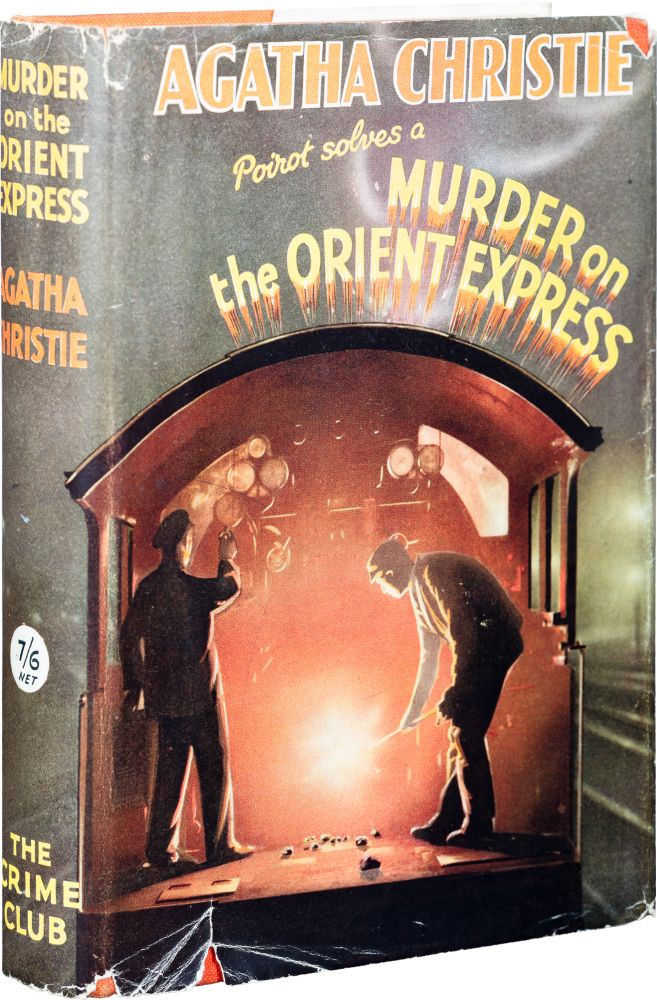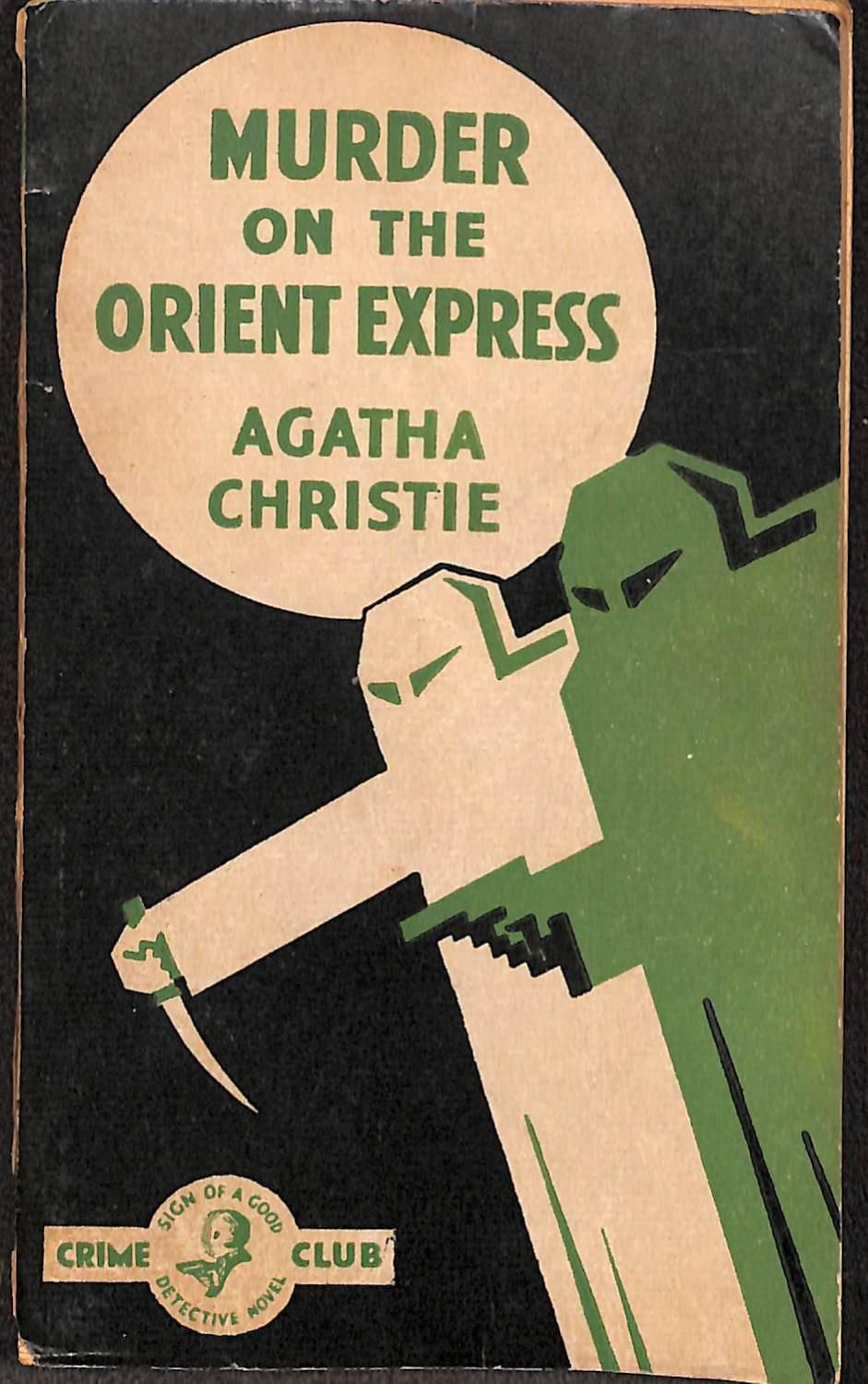COLLECT: Murder on the Orient Express - the book.
- David Morris
- Nov 14, 2020
- 6 min read
Updated: Feb 21

Arguably one of Agatha Christie’s most famous novels is Murder on the Orient Express. Consequently it is a must-have for any collector of Christie’s works. Unfortunately for almost all but a lucky few, the true first edition, published by Collins Crime Club in 1934, is extremely scarce and very expensive - even without a dust jacket. This article will focus on the full range of options for anyone who would like to own a collectible version of this title in its early years.
The Rarest of Rare - The Collins Crime Club first edition:
While Christie filed the copyright for this book in 1933, Collins first published it in January 1934. However, for unknown reasons the initial print run was particularly small and failed to satisfy the immediate demand. What is known is that there were two additional printings in January 1934 – the Second and Third Impressions. The Fourth Impression occurred in February 1934. It is unclear why Collins had four print runs within 60 days. One could speculate that one print run was distributed directly to libraries (as many firsts do appear to be ex-library). Alternatively perhaps one print run went solely to Crime Club members, or perhaps there just were supply shortages, but the specifics reasons are not clear (though readers in the know are welcome to provide insights). The impact for collectors is that while many later impressions appear for sale, the true 'first edition, first impression' is exceptionally rare. When a first does appear for sale, more often than not it has issues – generally poor condition or ex-library.

The Fourth Impression is known to exist with either orange or black boards. There is a general belief that the black board copies were exported while the orange boards were sold domestically in the UK. It is unclear whether every impression had some issued in both variants or not. Since the jacket had the 7/6 price in the spine art, any overseas territory or commonwealth country that priced the book differently would typically place a sticker over this price. Most of those have since been removed by archivists. While this is not a complete list, the Sixth Impression from March 1935 is also known to have been issued with black boards. The Eighth Impression from February 1937 was the last of the full size versions using the same print blocks as the first impression and was known to be in orange boards
UK Values:
Any copy of this first will command well in excess of £1,500 ($1,800 US) regardless of condition. A high quality (very good to fine) copy is seldom ever seen, but when one is the price will likely be double. As far as finding one with a jacket, they are like unicorns. Most sales will occur privately and if you are both lucky enough to find one and be able to afford it, then expect to pay £20,000 - £30,000 ($26,000 - $39,000 US). Any 2nd, 3rd or 4th impressions that ever had jackets have now certainly had them removed so they can be married to a 1st impression as there was no difference in the jacket design. This can easily be determined if the book has a sunned spine despite the current presence of a jacket. Unjacketed copies of these later impressions are fairly common and values are closer to £200 - £400.

Murder in the Calais Coach - the US first:
There were several books by Agatha Christie whose title was changed for the US market. One of the most unfortunate title changes was for Murder on the Orient Express which was titled Murder in the Calais Coach in the States. The reason was that Doubleday, Doran and Company had recently published (1933) Graham Greene’s novel Stamboul Express for the US market under the title Orient Express – likely for better shelf appeal.
The first US edition of Murder in the Calais Coach was published by Dodd Mead in 1934. Dodd Mead appears to have done two further impressions before the reprint rights were sold to Grosset & Dunlap. While many of the first editions that show for sale are ex-library, a correct first edition is generally much easier to find than the Collins version, likely due to a larger print run.

The Numbered Edition:
However, there is a highly collectible version of the Dodd Mead book that would take pride of place on any collector’s shelf. When the book was first published, Dodd Mead distributed approximately 250 numbered limited editions at an American Booksellers Association (ABA) dinner (the exact number is unknown). The books are identical to the first except for a notation on the front endpaper that states “This copy is one of a limited edition presented by the publisher to friends in the book trade. Not for sale. No: ___”. The number is then written in red ink. Needless to say the ‘not for sale’ was never adhered to! In recent years, there have been three of these we are aware of that sold: #133, #228 and #234. While low numbers are always appealing, there is no meaningful difference in value between any of them.
US Values:
Value is driven by condition and the presence of a dust jacket. For a US first in very good plus condition, numbered, and in a complete very good plus non-price clipped jacket, value is likely £4,000 -£6,000 ($5,200 - $7,800 US). Of note, an unnumbered version from the Otto Penzler sale sold at the Heritage Auction sale in 2019 for $6,250. Without the jacket the price falls by 80% plus.
Later UK Editions:
As stated earlier, the 8th impression by Collins was the last of the full-size reprints using the original printing sheets. The Ninth Impression issued in January 1938 was the first of the cheap versions, issued at a price of 1/-.

This book was also the last to carry any part of the original art design before the facsimile copy was published in 2011. It is also surprisingly uncommon.

The Tenth Impression, published in March 1940, was the most disappointing “uniform edition” with arguably the most uninspired dust jacket ever for such a great title. The market value for this version is minimal at best.

In 1953, Collins moved on to what they called the “New Edition” which at least returned to cover art. This time portraying the train stuck in snow. Copies of this title in jacket are generally available for £100.
The Albatross Paperback:
While the focus of this article is on collecting the hardback printings, paperbacks were printed concurrently with the hardback and two editions are highly collectible – The Albatross and the White Circle.

The most collectible of all paperback versions was published by Albatross books. This firm started publishing in 1932 in Continental Europe and are some of the most beautifully designed paperback books. Amongst the titles it published in this first three years were ‘Brave New World’, ‘Ulysses’, ‘The Maltese Falcon’, ‘Lady Chatterley’s Lover’ and ‘Murder on the Orient Express’ (Albatross #121). On the board of Albatross were William and Ian Collins. While they are well known for starting the Collins Crime Club in 1930, they also created the Albatross Crime Club and from 1937 also the Albatross Mystery Club. In many ways the Albatross Crime Club acted as the de facto continental imprint of the Collins Crime Club - even the logo was the same.

Since paperback editions of the Collins Crime Club did not appear in the UK until April 1936, after the launch of Penguin, many Albatross editions are not only the first Continental editions, but also the first paperback editions. For Murder on the Orient Express, the Albatross version was actually published in the same year as the first edition (1934), and as such is a highly collectible book to seek out. Of note, no reference is made within this paperback of prior Collins printings. A very good plus condition copy is well worth £200 ($250 US).
The White Circle Collins Paperback:
In the UK, Collins first published Agatha Christie’s Murder on the Orient Express as their White Circle No. 1 (1936). While Collins stated this was the 8th printing on the fly leaf, it was actually the first paperback printing in the UK.

It is important to note that by now Collins was losing track of the number of printings and so the stated print runs in paperbacks should be viewed as approximates. There were at least two further White Circle printings with the same cover art, with the 10th impression in 1937. A very good plus condition copy of the 8th impression (1st White Circle) is well worth £250 ($300 US).
Summary:
While Murder on the Orient Express continues to be published and many other versions of this title can be acquired, there is something appealing about a period correct, vintage publication. Hopefully there is something profiled in this article that fits every budget out there and will give you something new to search for to add to your collection. Happy hunting.





Kommentare